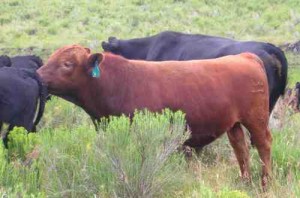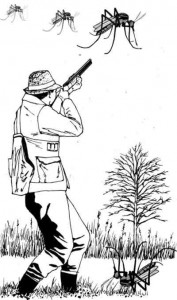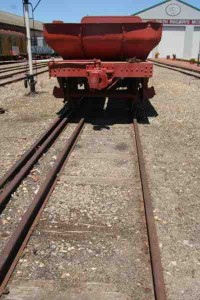Column by John Mattingly
Water – August 2007 – Colorado Central Magazine
WATER! WATER!
IN THE SAN LUIS VALLEY, yelling WATER! is almost like yelling FIRE! in a crowded theater. Valley people have a history of getting excited when there is talk of exporting Valley water to Colorado’s Front Range, or worse, to Las Vegas and California.
This article offers a look at one of the more famous water bodies in the Valley: that underlying the Baca Ranch, a 160,000-some acre spread along the Sangre de Cristos south and west of Crestone. The ranch originated as the Luis Baca Land Grant that came out of the U.S.-Mexico boundary settlements at the Treaty of Guadeloupe Hidalgo in 1848, and now is part of Great Sand Dunes National Park. Because water issues can be as confusing as they are controversial, I confess that what follows is a brief, broad-brush account susceptible to alternate interpretations.
In the early 1980s, American Water Development Inc. (AWDI) bought the Baca Ranch and announced plans to claim and pump the Ranch’s deep groundwater, roughly estimated at 2 billion acre feet by a prior US Geological Survey. AWDI’s proposed beneficial uses included agricultural development — center pivots to grow alfalfa, barley and potatoes — and sale of water outside the Valley. AWDI claimed there was so much water under the Baca Ranch that there would be plenty to go around for everyone. AWDI thought their plan would be well received, as it meant jobs and general economic enlargement for the Valley.
They were wrong.
Valley citizens of every stripe mobilized in opposition. There were impassioned speeches, fundraisers, bumper stickers, signs painted on the windows of local businesses. If a person openly supported AWDI, that person might have to buy his propane in Salida, and farm equipment in Kansas.
I first came to the Valley in 1988, right in the middle of the anti-AWDI frenzy. As manager of a large farming operation with water rights that might be impacted by groundwater pumping, I read AWDI’s application for water rights. After doing so, I wrote to my employers on December 7, 1989:
AWDI should probably be re-acronymed AWDUI. It’s been a while since I’ve seen intelligent people get so intoxicated over something so infeasible. Three reasons:
1. AWDI argues that because the Baca Ranch was a land grant, it is governed by the terms of the Treaty of Guadeloupe Hidalgo, not Colorado water law. Next time AWDI attorneys get a speeding ticket on the way down here for a consult, they might argue Colorado was a part of the Louisiana Purchase, and thus controlled by the laws of France, not Colorado.
2. AWDI further argues that the water under the Baca ranch is non-tributary, “fossil” water. Bull butter. There is a long tradition in Colorado of people with resources and imagination using legal novelty to try to cut to the front of the long line of standing appropriators. From what I’ve learned, the Rio Grande basin is like every other Colorado basin: It’s over-appropriated and there is simply no water available for appropriation, anywhere, at any depth. Those deep water molecules are connected, and at this stage in the cycles of appropriation, non-tributary arguments will fail.
3. Even if there was water to appropriate, AWDI proposed to pump from around three thousand feet, which is prohibitively expensive.
So, AWDI smells to me like a group of well-heeled speculators who have hired a pack of loud-barking water lawyers, and cut their leashes.
This letter proved more or less accurate when, several years later, AWDI was spanked out of court by Judge Ogburn. AWDI dropped its novel claim regarding some sort of water rights going back to the 1848 Treaty of Guadalupe Hidalgo, and at the last minute dropped its non-tributary claim and tried to argue, from relatively crude models, that even though the fossil water was tributary, its removal did no injury to existing water rights.
Ogburn’s ruling made it clear that (a) the water under the Baca Ranch was tributary to the Rio Grande, (b) the current state of hydrologic models of the Valley is suspect, and finally (c) any pumping from the Valley’s deep aquifers would cause injury to both surface and groundwater regimes.
Gary Boyce then purchased the Baca Ranch from AWDI a year or so later, and though he’d been among the chorus of AWDI opponents during its ownership, Boyce hatched an idea to pump and export water from the Baca Ranch under a different theory. Boyce’s Stockman’s Water Company, quickly dubbed “AWDI 2,” tried to distinguish itself from its unpopular predecessor with a pair of claims:
1. Boyce put together a team, including former Colorado State Engineer Jeris Danielson, which produced a hydrologic model asserting one gallon of surface water from the senior surface rights of the Baca Ranch were sufficient to answer the injury from four gallons of water pumped from the deep aquifer under the Ranch. Unlike AWDI, Stockman’s was not injuring prior appropriators, nor was Stockman’s making any novel claims. Stockman’s was honest ranchers doing it by the book, and even though Stockman’s wasn’t required to do so, it was going to create a special fund to help neighbors of the Ranch if their domestic wells went dry.
2. Boyce reinforced his position with a clarion call to all ranchers to join him, sell their water, and use the interest income from this windfall to buy their hay rather than grow it. Water was too valuable to run across meadows, and by doing so, ranchers limited their upward mobility in society.
I HAD A NUMBER of spirited exchanges with Boyce via letters to the editor of the Alamosa Courier, in which I pointed out:
1. Hydrologic models of the Valley are suspect, a fact determined by the AWDI ruling. And the one-in/ four-out augmentation plan was more creative than convincing, given that the surface water flows from Baca Ranch were highly variable, so even if one allowed the unlikely possibility that the Stockman’s model was correct, there would be dry years when the Baca Ranch streams would not yield enough water for timely and consistent augmentation.
Further, Boyce assumed the surface flows from Baca Ranch streams were 50% consumptive, which was generous by about 500%, as most meadow flood systems on Colorado ranches have been shown in numerous court cases to be around 10% consumptive. (Consumptive means that portion of the water actually removed from the regime and therefore providing no return flows. Water flooding across a ranch meadow, for example, is typically large in volume, but most of it passes over and through the meadow, eventually making its way back to the basin of origin and becoming an irreversible part of a downstream water right.)
2. Ranchers are fully aware that their water is more valuable than the crops they grow, but ranching is what they do. To sell their water would mean selling an essential part of their livelihood to invest capital in unfamiliar financial territory. From an investment standpoint, a rancher would likely consider holding on to water rights as both a better investment, and one with as much upside potential, as owning any stock offered on Wall Street.
DESPITE THE RUCKUS of conversation that Boyce’s claims made in the press, it’s important to remember that Boyce never actually filed an application for the groundwater under the Baca Ranch. He simply blew a loud horn suggesting, or threatening, he would do so. That alone was enough to mobilize a cohort of activists: from attorneys to hayseeds, Bambi lovers to bureaucrats, and perhaps most important, politicians, in the cause of stopping, once and for all, all future private speculation with the waters on, and under, the Baca Ranch.
That sparked the idea among this confederacy of activists to add the Baca Ranch to Great Sand Dunes National Monument, making it big and diverse enough to qualify as a national park. Adding the Baca Ranch to public lands would stop the speculation over the water rights of the ranch and thus save Valley citizens millions of dollars in future litigation.
I openly opposed the idea of parking the monument in letters, articles, and public debate, not only because the maneuver removed 160,000-some acres from the Saguache County property tax base while increasing the demand for services, but because I viewed the federal government as better situated to export water from the Valley than any speculator.
The only entity with the physical and regulatory capacity to export water from the Valley to date is the federal government, via the Closed Basin Project, and I will mention here parenthetically (and allow readers to draw their own conclusions) that the main canal for the Closed Basin Project passes through the Baca Ranch, now part of Great Sand Dunes National Park.
So, although the activists pushing for the union of the Baca Ranch and the Dunes Monument claimed it was a marriage that “protected” Valley water from the greed of future speculators, it was, in my opinion, a bit like saying, “Let’s put an 800-pound gorilla in the hen house to protect the chickens from the foxes.”
Once the Baca Ranch was absorbed into the Park, the federal government filed for all the unappropriated ground water under the Park. Their filing (a) was not intimidated by the long menu of prior cases confirming that there is no unappropriated water in any of the Valley water regimes, (b) did not state a specific quantity of water to be appropriated, and (c) sought to appropriate an “in place” ground water-table level sufficient to support Park purposes, this being the third attempt to appropriate the water under the Baca Ranch.
First, AWDI claimed that water was non-tributary, then tributary, but either way appropriable out of priority, then Boyce claimed he could put in a quart and take out a gallon in such a way that no one would feel the difference, and now the feds have offered their appropriative theory, claiming they’re really not going to take the water out, they just want it to be there to support their surface water decrees.
I filed a statement of opposition to the U.S.A.’s application, joined by a small group of other parties, and before the matter was set for trial, I filed a motion with the court that the U.S.A. application be denied because it failed to meet the basic elements of appropriation, namely:
1. There be water in the regime available for appropriation without injury to other appropriators.
2. The application state a specific quantity of water.
3. The application cannot be for a characteristic of the water, such as a water-table level.
JUDGE O. JOHN KUENHOLD agreed with my motion to the extent that the U.S.A. must state a specific quantity of water, and ordered the U.S.A. to amend its application to include quantification. Judge Kuenhold also encouraged the U.S.A. to take factors related to global warming into consideration. The issues of whether there is water to be appropriated in Valley regimes, and whether an “in place” water right can be claimed, are issues of fact that can only be determined at trial.
The U.S.A. will be amending, and publishing, its new application in the coming months. Valley citizens with water interests will again have an opportunity to scrutinize this third attempt to get control of the water under the Baca Ranch, and state any oppositions or support they may have.
The key question, in my opinion, is this: If there’s no unappropriated water in any of the Valley water regimes (a fact solidly established in prior cases) how can the U.S.A.’s application seek a quantity of water greater than zero?
John Mattingly, who can sometimes be found in Greater Moffat, is attempting to recover from his years as a farmer in the Valley.




